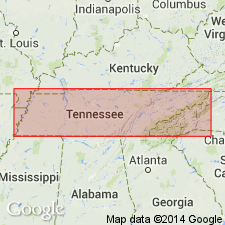
- Usage in publication:
-
- Decatur limestone*
- Modifications:
-
- Named
- Dominant lithology:
-
- Limestone
- AAPG geologic province:
-
- Cincinnati arch
Summary:
Decatur limestone, named in this report, consists of massive white crinoidal limestone with some magnesian beds. Thickness reaches 70 or more feet. Toward top becomes slightly shaly and more fossiliferous. At Lady's Bluff consists of (descending): yellow argillaceous limestone (2 ft); massive white magnesian limestone (30 ft), argillaceous grayish limestone weathering into shale (11 ft); massive magnesian limestone, grayish at top and yellowish toward bottom, 20 ft. Top formation of Niagaran of western TN. Unconformably underlies Linden formation (Lower Devonian) and overlies Lobelville formation, top formation of Brownsport group. [E.O. Ulrich considers this formation to be late Cayugan, rather than Niagaran.]
Source: GNU records (USGS DDS-6; Reston GNULEX).
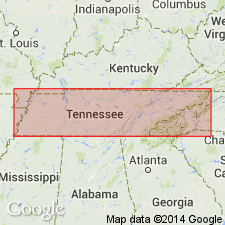
- Usage in publication:
-
- Decatur limestone
- Modifications:
-
- Overview
- AAPG geologic province:
-
- Cincinnati arch
Summary:
Decatur limestone conformably overlies Brownsport formation. A post-Decatur unconformity is present throughout western TN. Unit may be overlain by beds ranging in age from Devonian to Cretaceous. As a result of this post-Silurian erosion, thickness of Decatur varies greatly within a short distance. For example, near Sewell's Spring, Clifton quad., thickness ranges from 18 to 70 ft. Some Devonian may be present in upper part here.
Source: GNU records (USGS DDS-6; Reston GNULEX).
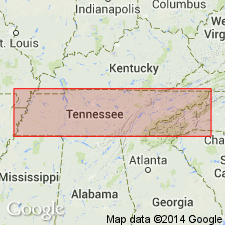
- Usage in publication:
-
- Decatur limestone
- Modifications:
-
- Revised
- AAPG geologic province:
-
- Cincinnati arch
Summary:
Pg. 266-269, fig. 2. Decatur limestone of Brownsport group. Included in Brownsport group. Everywhere overlain unconformably by formations of the Devonian or by Chattanooga shale. Locally is an overlapping unit; transgresses westward across beveled Lobelville and Bob formations and part of Beech River formation. Believed to be Niagaran in age.
Source: US geologic names lexicon (USGS Bull. 1200, p. 1061).
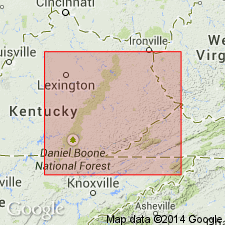
- Usage in publication:
-
- Decatur Limestone
- Modifications:
-
- Areal extent
- Age modified
- AAPG geologic province:
-
- Illinois basin
- Cincinnati arch
Summary:
Decatur Limestone is as much as 100 ft thick in the study area. Overlies Middle Silurian Lobelville Formation. Intertongues westward with Bailey Limestone and grades northward into Liston Creek Limestone Member of Wabash Formation. Age stated in this report is Late Silurian (Cayugan).
Source: GNU records (USGS DDS-6; Reston GNULEX).
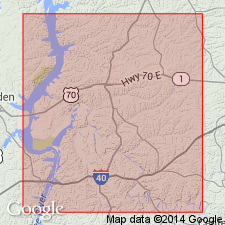
- Usage in publication:
-
- Decatur Limestone*
- Modifications:
-
- Age modified
- Biostratigraphic dating
- AAPG geologic province:
-
- Cincinnati arch
Summary:
Decatur Limestone is dated as Silurian and Early Devonian based on conodonts. It is present in du Pont Geohydrological Survey well near Waverly, Humphreys Co., central TN. ICRIODUS WOSCHMIDTI Ziegler is an auxiliary guide to the base of the Devonian. Specimens questionably assigned to this species first appear at 513.4 to 518.8 ft in the core, about 2 to 7 ft below upper boundary of Decatur. Authors believe, but cannot prove, that these specimens are indeed I. WOSCHMIDTI because collections made by Harris from upper part of Decatur near Parson's quarry, Decatur Co., TN, about 35 mi south-southwest of the du Pont well, produced abundant I. WOSCHMIDTI 5 ft below top of formation. A collection made 4 ft lower in Decatur yielded OULODUS ELEGANS (Walliser), a characteristic Late Silurian species that does not appear to extend into Devonian in Appalachian basin. McComb (1987, unpub. M.S. thesis) also placed Silurian-Devonian boundary within upper beds of Decatur, on the basis of conodonts, in Parson's quarry. ICRIODUS WOSCHMIDTI? occurs in three samples (507.5 to 518.8 ft) from uppermost Decatur and overlying Rockhouse Limestone Member of Ross Formation. These beds are assigned to WOSCHMIDTI Zone as the nominate species appears to restricted to its zone.
Source: GNU records (USGS DDS-6; Reston GNULEX).
For more information, please contact Nancy Stamm, Geologic Names Committee Secretary.
Asterisk (*) indicates published by U.S. Geological Survey authors.
"No current usage" (†) implies that a name has been abandoned or has fallen into disuse. Former usage and, if known, replacement name given in parentheses ( ).
Slash (/) indicates name conflicts with nomenclatural guidelines (CSN, 1933; ACSN, 1961, 1970; NACSN, 1983, 2005, 2021). May be explained within brackets ([ ]).

